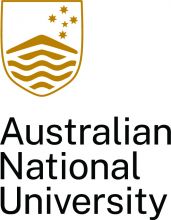The Australian National University is in the red for the first time since 2008, recording an A$18 million (£10 million) “reportable” deficit last year – and the federally funded institution’s vice-chancellor said the real situation was far worse, with its financial problems masked by reporting conventions.
Brian Schmidt said ANU had recorded a A$162 million “operating” deficit after revenue slumped and costs soared during the “hardest 12-month period in our history”.
The Canberra institution is usually the envy of the sector. Its National Institutes grant, which other universities do not attract, earned it more than A$200 million in 2019.
But ANU appears to have taken a bigger hit than many other universities after deciding to cap its international student numbers in 2018 over fears that it was growing too fast. This denied it the extra cash that propelled Australia’s three richest universities – Melbourne, Monash and Sydney – into surprise surpluses last year.
In a 22 April email to staff, Sydney vice-chancellor Stephen Garton credited the university’s A$107 million operating surplus partly to a surge in international enrolments, which were 18 per cent higher than at the same time last year.
Some other institutions – notably the University of Queensland, which posted a A$109 million surplus last year – have also boosted their foreign enrolments thanks to pent up demand from continuing students who deferred last year.
This means that even though new international enrolments have fallen during the pandemic, some universities are still benefiting from a pre-Covid boom that drove international tuition fee revenue up by 13 per cent in 2019 alone at Queensland, and 20 per cent at Sydney – compared with just 1 per cent at ANU.
Its deficit represents a massive turnaround from the A$300 million surplus posted the previous year. The university earned some A$325 million less than it had in 2019, largely because of a A$172 million crash in investment earnings and an A$81 million drop in tuition income.
Meanwhile, expenses rose by a combined A$157 million, fuelled by A$66 million in staff “separation” payments and A$34 million in additional salary costs. The university says it also shelled out an extra A$28 million or so in hardship payments and covering absent students’ accommodation costs.
Professor Schmidt said things would have been worse if the university had not earned A$23 million more than expected from tuition fee income – thanks to higher than anticipated student retention – and an unexpected A$27 million bonus in research grants and consultancy fees.
“This does not mean we have…more than we thought we had,” he warned in a 23 April email. “It simply means we have a smaller deficit.”
He said the losses were substantially worse than the A$18 million reportable deficit outlined in its financial statements, which have been approved by ANU’s council and are expected to be released soon as part of the institution’s annual report.
The reportable figure includes more than A$150 million in insurance payouts – needed to repair damage from floods and a hailstorm – and investment earnings tied to the university’s endowments and superannuation obligations. “It is not money we can use for general operational costs,” Professor Schmidt said.
Professor Garton had a similar message for his staff, saying Sydney had recorded an “underlying net loss” of A$2 million last year, notwithstanding the A$100 million-plus reported operating surplus.
“It’s important to remember that this includes revenue from philanthropic donations, investment earnings and research grants which cannot be spent on day-to-day operations,” he said. “In real terms we were able to roughly break even.”
ANU said it did not expect to have to cut any more jobs than those outlined in its recovery plan late last year. Sydney said it would relax some restrictions on recruitment and project funding.
Sydney and ANU are the latest universities to disclose their headline financial results ahead of the formal release of their annual reports, saying they want to be upfront about their circumstances. While the pandemic has inflamed anxieties about job security in the sector, administrators are also battling perceptions that they are sitting on massive cash reserves.
Earlier this year, Melbourne told staff that it expected a reportable surplus of about A$180 million and an operating surplus of A$8 million, which it also described as a “break-even result”. Monash said it had achieved a A$259 million operating surplus – which it described as “a buffer for the future” – while Flinders University said it expected a reportable surplus of about A$35 million. The University of Wollongong warned staff to expect an operating loss of about A$40 million.
Four of the 11 public universities in Queensland and Western Australia – the only states where annual reports have been released – reported deficits totalling almost A$50 million.






